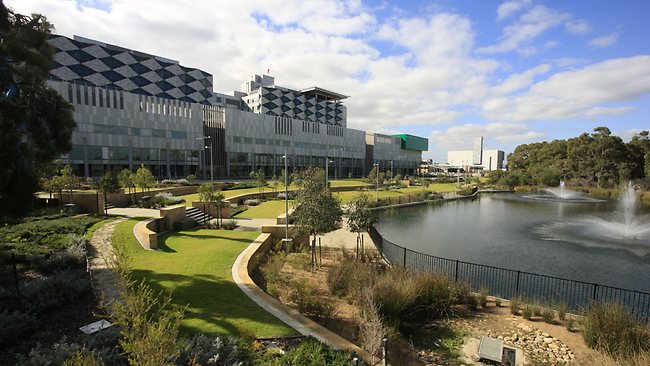
Project Details
The construction of the Fiona Stanley Hospital has incorporated water sensitive urban design principles at a precinct scale to deliver a fully integrated landscape and water management strategy that enhances the connection between people and the natural environment. It successfully demonstrates that demand for scheme and groundwater can be minimised through using natural systems, recycling and efficiency.
WSUD Category: Green Roof & Walls, Rainwater storage & reuse system, Retention of native vegetation, Underground storage
| Criteria | Information |
|---|---|
| Development Type: | Residential |
| Function/Driver: | Water conservation |
| Government Area: | City of Melville |
| Site Context: | Shallow groundwater |
| Year Completed: | 2014 |
The total site area is 32 hectares. This includes 18,600m2 of two tier roof gardens, 16,500m2 of public open space and 5 ha of bushland, landscaped parks and gardens.
The landscape design provides open spaces for conservation and protection of the environment, passive recreation, amenity and integrated stormwater management. The landscape strategy retains existing vegetated areas and topography and provides a habitat for the Carnaby’s Black Cockatoo as well as other fauna.
By maintaining the topography of the site, the strategy is able to utilise the existing hydrology and natural systems, infiltrating stormwater from major events into low points, Lake Park and the bushland, and recharging the groundwater resources in the superficial aquifer. On site infiltration is further facilitated via underground concrete infiltration tanks. The design permits construction over the tanks.
Roof gardens assist with:
- the reduction of stormwater run-off and peak flows;
- filtration of the stormwater through the soil profile before entering the stormwater network;
- retention of rainfall within the engineered soil profile for use by plants, reducing irrigation demand.
The roof gardens also improve air quality, reduce noise pollution and provide habitat for birds and insects.
Other water sensitive urban design measures include the use of rainwater and wastewater from the central building’s Reverse Osmosis (RO) water plant in the hospital for toilet flushing; the use of water efficient fixtures; and native planting.
The irrigation design features two water mains for the hospital and City of Melville with separate pumps, filters and control gear. The irrigation system to roof gardens and streetscape areas can be switched off when plants have established to reduce overall demand.
New WAter Ways’ detailed case study on Fiona Stanley Hospital can be viewed here
